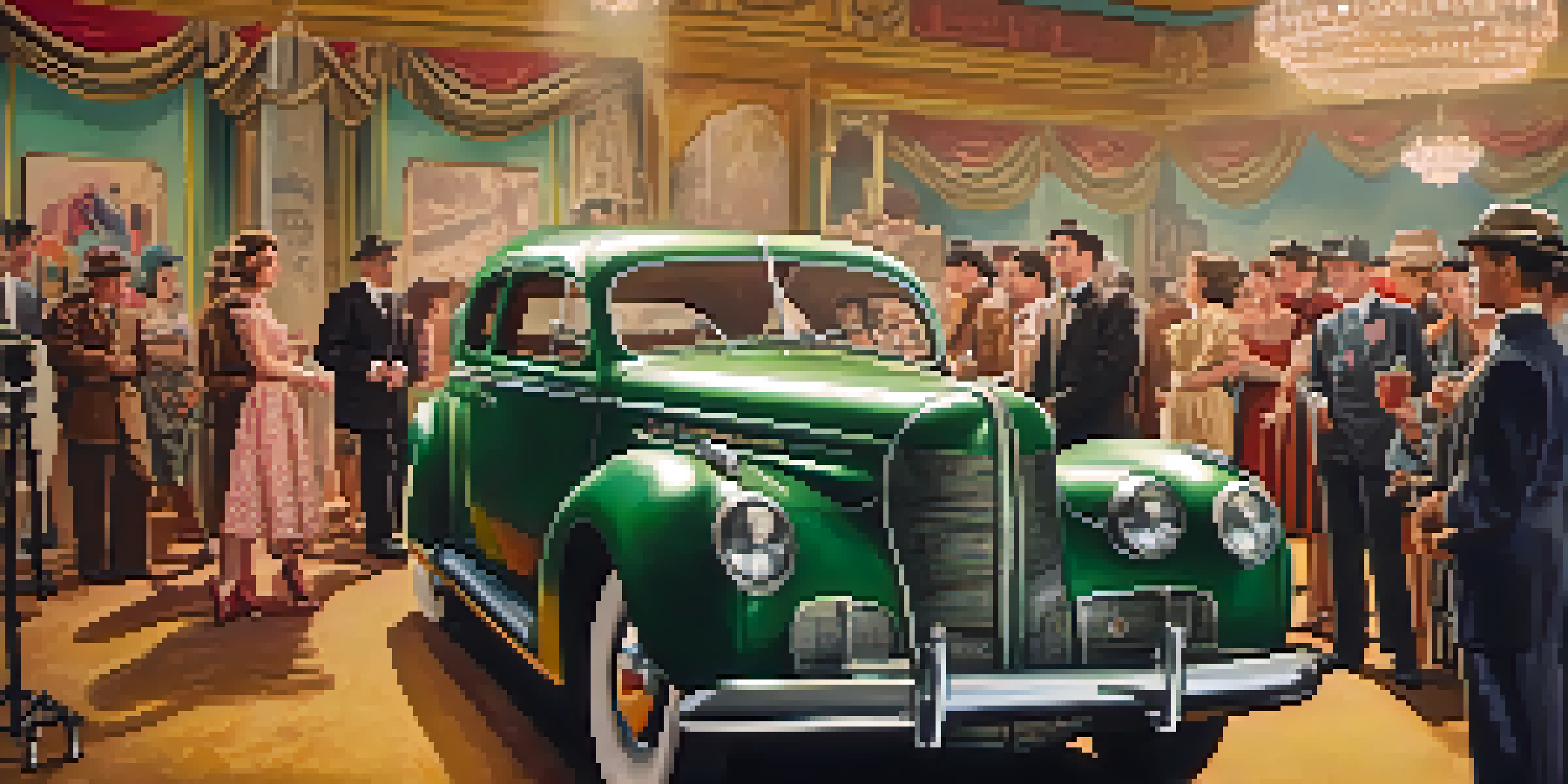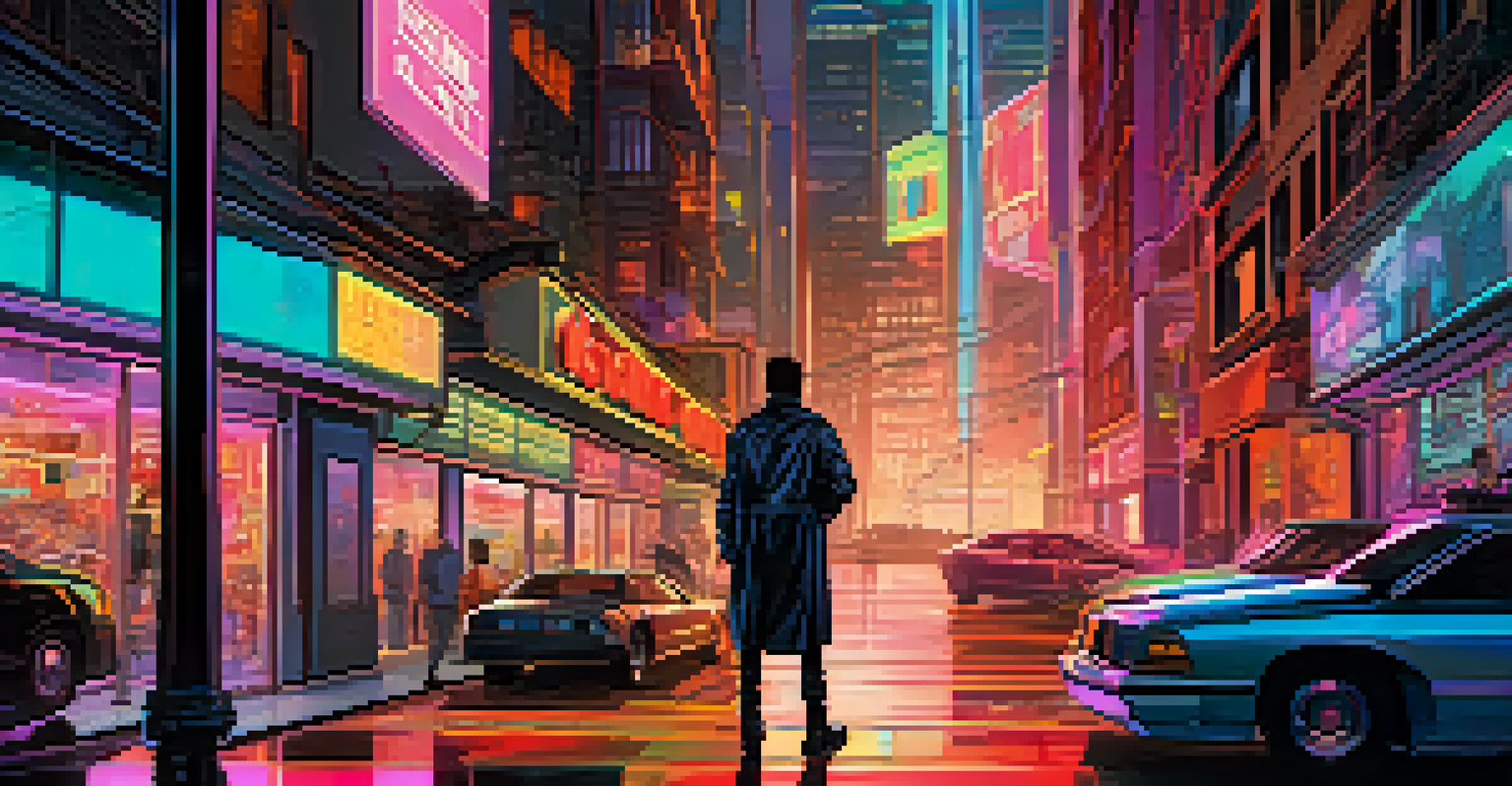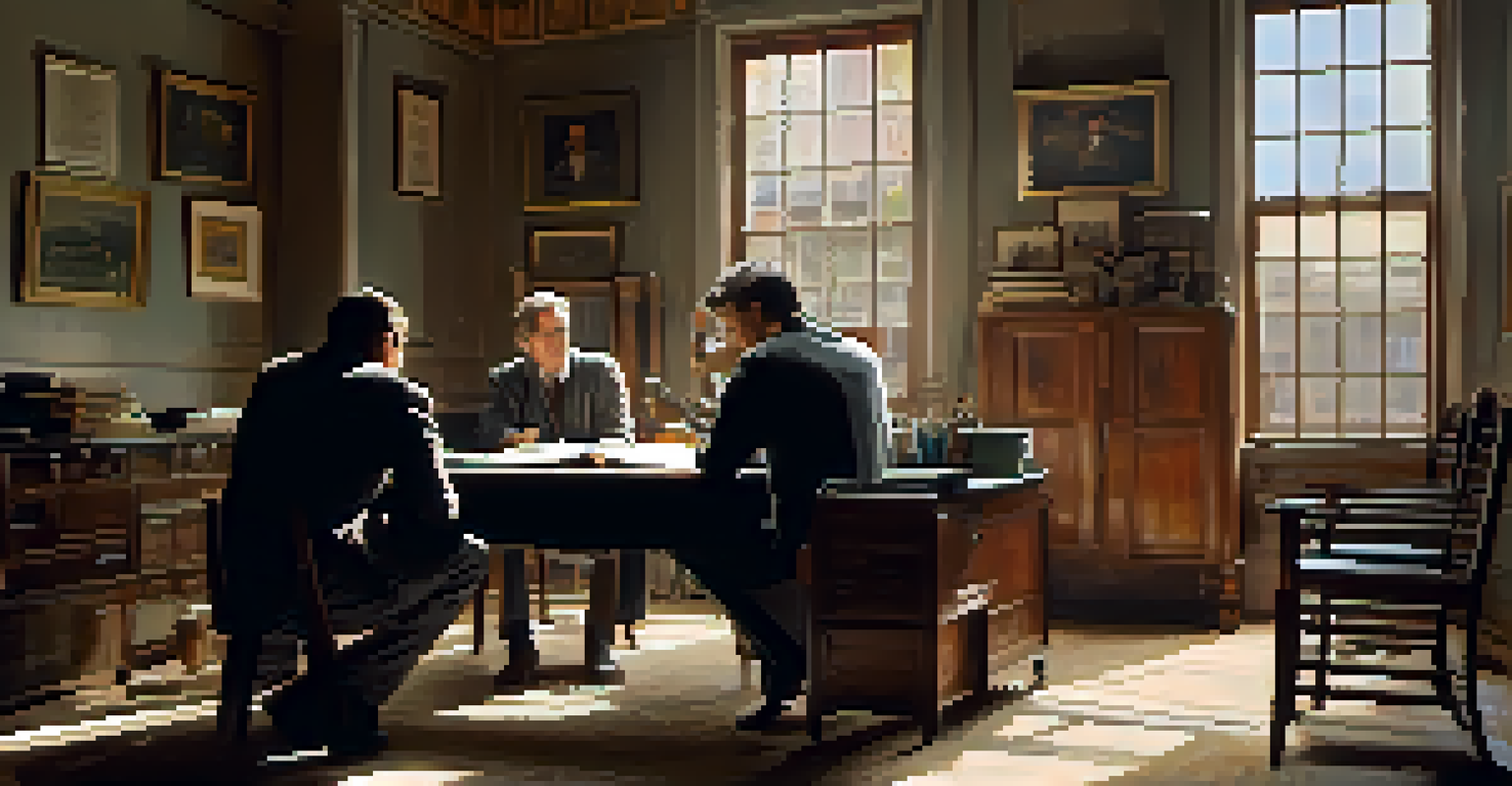The Evolution of Adaptations: Trends in Film Over the Decades

Defining Adaptations: What Are They and Why Do They Matter?
Adaptations are creative works that take existing stories—like books, plays, or even video games—and transform them into a new medium, such as film. This practice has been around for decades, serving as a bridge between different forms of storytelling. The significance of adaptations lies in their ability to introduce a story to new audiences and offer fresh perspectives on familiar narratives.
Adaptation is not imitation. It is a re-creation of the world in another form.
One of the most striking examples of this is the adaptation of J.K. Rowling's Harry Potter series into films, which not only captivated fans of the books but also attracted a whole new generation. By translating the magical world of Hogwarts onto the silver screen, filmmakers breathed new life into the beloved characters and plotlines. This process of adaptation often requires a delicate balance between staying true to the source material and making it accessible for viewers.
In essence, adaptations allow us to revisit cherished stories while experiencing them in a different light. They spark discussions about fidelity to the original and the creative liberties taken, making them a fascinating topic for film enthusiasts and casual viewers alike.
The Golden Age: Classic Adaptations of the 1930s and 40s
The 1930s and 40s marked a golden era for film adaptations, where Hollywood embraced literary classics. This period saw iconic films like 'Gone with the Wind' and 'The Wizard of Oz,' both adapted from popular novels. These films not only showcased the artistic capabilities of cinema but also set a standard for future adaptations by emphasizing storytelling and character development.

During this time, filmmakers often relied on established literary works to secure box office success. The allure of adapting well-known stories made it easier to attract audiences, as viewers were already familiar with the material. This trend also led to the emergence of some of the most memorable performances in film history, as actors brought beloved characters to life on screen.
Adaptations Bridge Storytelling Gaps
Adaptations transform existing stories into new mediums, making them accessible to diverse audiences and sparking fresh discussions.
However, this era was not without its challenges. Filmmakers had to navigate the fine line between honoring the source material and making necessary changes to fit the cinematic format. This balancing act would continue to evolve as the industry progressed, paving the way for diverse adaptations in the following decades.
The Rise of the Blockbuster: 1950s to 70s Adaptations
The mid-20th century saw the rise of the blockbuster, with adaptations becoming a key component of this phenomenon. Films like 'West Side Story' and 'To Kill a Mockingbird' captivated audiences, showcasing the versatility of adaptations across genres. This era marked a shift in focus, where adaptations were not just about retelling stories but also about creating cinematic spectacles that drew viewers into theaters.
The best adaptations are those that respect the source material while also bringing something new and valuable to the table.
As the film industry began to embrace new technologies and marketing strategies, adaptations from Broadway musicals and literary classics gained popularity. The transition to larger-than-life productions allowed filmmakers to experiment with visuals and sound, enhancing the storytelling experience. This period witnessed a more adventurous approach to adaptations, as directors sought to push the boundaries of what could be achieved on screen.
Moreover, this era also highlighted the growing acceptance of diverse narratives, with adaptations exploring complex social issues. The success of these films paved the way for future adaptations, encouraging filmmakers to take risks and adapt lesser-known works that resonated with contemporary audiences.
The 1980s and 90s: A Shift Towards Contemporary Adaptations
As the 1980s and 90s rolled in, the landscape of film adaptations began to shift toward contemporary works. Filmmakers started to look beyond classic literature, turning their attention to modern novels, comic books, and even video games. This change reflected a broader cultural shift, where the stories of the present were gaining prominence in popular media.
Popular adaptations during this time included films like 'The Shawshank Redemption,' based on Stephen King's novella, and 'Jurassic Park,' adapted from Michael Crichton's novel. These films not only resonated with audiences but also showcased the potential for storytelling in unique and thrilling ways. The focus on contemporary narratives allowed for a more relatable connection between the audience and the characters on screen.
Hollywood's Golden Era of Adaptations
The 1930s and 40s marked a golden era for adaptations, where filmmakers embraced literary classics to attract audiences and set storytelling standards.
Additionally, this era saw the emergence of franchises, as adaptations began to span multiple films. Series like 'The Lord of the Rings' and 'Harry Potter' not only captivated audiences but also set a new precedent for how adaptations could evolve into expansive cinematic universes, making them a significant trend in the industry.
The 2000s: Expanding Horizons with Diverse Adaptations
The 2000s marked a transformative period for film adaptations, as filmmakers began to embrace diverse narratives from around the world. This decade saw an influx of adaptations from different cultures, genres, and mediums, including graphic novels and international literature. Films like 'The Kite Runner' and 'Slumdog Millionaire' introduced audiences to new perspectives and storytelling styles.
Moreover, this era was characterized by a growing emphasis on inclusivity and representation in adaptations. Filmmakers started to recognize the importance of telling stories that reflect a variety of voices and experiences. This shift not only enriched the cinematic landscape but also encouraged audiences to engage with narratives they may not have encountered otherwise.
Additionally, the rise of technology played a significant role in how adaptations were crafted. With advancements in visual effects and animation, filmmakers were able to bring fantastical elements to life, expanding the possibilities for storytelling. The blending of genres and the exploration of unconventional narratives became hallmarks of this decade, further pushing the boundaries of what adaptations could achieve.
The 2010s: Nostalgia and Reboots Take Center Stage
As we entered the 2010s, nostalgia played a significant role in the adaptation landscape, with studios increasingly turning to beloved classics for reboots and retellings. Films like 'Beauty and the Beast' and 'Ghost in the Shell' demonstrated a trend toward reimagining familiar stories for a new generation. This wave of nostalgia-driven adaptations not only drew in audiences familiar with the originals but also introduced these tales to younger viewers.
While some critics debated the necessity of reboots, many fans embraced these fresh takes on cherished stories. The blend of modern sensibilities with classic narratives allowed filmmakers to explore themes relevant to contemporary audiences while retaining the essence of the originals. This approach sparked discussions about originality, creativity, and the evolving nature of storytelling.
Future Trends Emphasize Diversity
The future of adaptations is leaning towards original narratives inspired by existing works, with a strong focus on inclusivity and diverse voices.
Additionally, the 2010s saw the rise of streaming platforms, which changed the way adaptations were produced and consumed. Series adaptations, like 'The Handmaid's Tale' and 'Stranger Things,' showcased how episodic storytelling could breathe new life into existing narratives, allowing for deeper character development and intricate world-building. This evolution further diversified the adaptation landscape, breaking the mold of traditional filmmaking.
The Future of Adaptations: Trends to Watch Out For
As we look to the future, the landscape of film adaptations continues to evolve, with new trends emerging that reflect changing audience preferences. One significant trend is the increasing focus on original stories inspired by existing works, rather than direct adaptations. This allows filmmakers to explore familiar themes while crafting unique narratives that resonate with contemporary audiences.
Moreover, the growing popularity of graphic novels and webcomics is likely to shape the next wave of adaptations. With visually stunning artwork and compelling storytelling, these mediums have the potential to introduce fresh narratives that appeal to diverse audiences. Films like 'Spider-Man: Into the Spider-Verse' exemplify how these adaptations can push creative boundaries and redefine storytelling methods in cinema.

Finally, as societal conversations around representation and inclusion continue, we can expect a broader array of voices and stories to emerge in adaptations. Filmmakers are increasingly aware of their responsibility to reflect the world in its entirety, leading to more diverse and authentic portrayals on screen. This commitment to inclusivity will not only enrich adaptations but also ensure that future generations have access to a wide range of narratives that inspire and entertain.